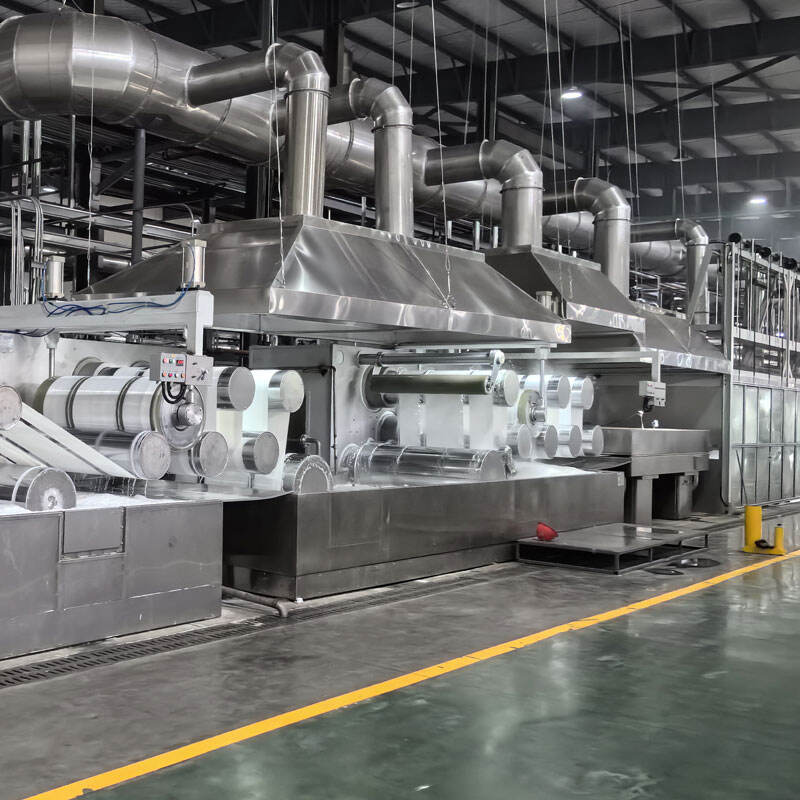Agricultural film is important for modern agriculture because it helps with soil moisture retention and helps soil temperature stabilization. Although, recycling it is an environmental issue. Each year, many used agricultural films are left in farmland, polluting soil and harming crop growth. Conventional recycling methods are costly and inefficient and separating impurities from the streams is difficult. This increases the environmental burden and hinders the agricultural industry from developing sustainably. At this point, finding a solution is urgent, where bicomponent fiber could be a main player for solving the recycling of agricultural films.
Bicomponent fiber being one of a kind, holds potential for solving agricultural film recycling. Bicomponent fiber used in agriculture has the ability to enhance the mechanical properties of the film and facilitate the films breakdown for recycling. Bicomponent fiber is a cross section of integrated polypropylene and polyethylene polyethylene, serving for agriculture functionality.

The ability to separate the two components of bicomponent fibers during recycling under certain conditions helps to ease the task of removing impurities. This advancement positively impacts the efficiency of recycling agricultural films and reduces the costs associated with recycling, paving the way for a potential solution to the recycling dilemma.
Despite the potential of bicomponent fiber in agricultural film recycling, several issues remain. To begin with, the price of producing bicomponent fiber exceeds that of commonly used materials, which could potentially raise the price of agricultural films and discourage farmers from purchasing them. Additionally, there are no well-established manufacturing methods or standards for agricultural film made from bicomponent fibers, which results in inconsistent quality and makes it difficult to address the varied demands in agriculture. Moreover, the dissemination of bicomponent fiber and its benefits is limited, leaving a considerable portion of farmers and businesses under-informed, thereby restricting the use of bicomponent fiber in recycling agricultural films.
Enterprises can optimize the production process of bicomponent fiber to boost efficiency and lower material wastage. Implementing cutting-edge technologies in the spinning process can enhance the bicomponent fiber output while safeguarding the quality. Moreover, substituting expensive polymer materials with inexpensive, equally effective alternatives while strengthening raw material research and development can significantly lower the cost of production for bicomponent fibers. Furthermore, government authorities and relevant departments can encourage and facilitate the rollout of subsidies for the production of bicomponent fibers. This help can further encourage government-supported companies to grow their production scale and, in turn, lower their unit cost. This help can further encourage government-supported companies to grow their production scale and, in turn, lower their unit cost.
Ensuring quality and facilitating the versatile use of bicomponent fiber agricultural film requires the imposition of unified production and quality standards. To maintain conformity, the integration of several industry associations along with government departments must specify standards in the areas of raw material composition, mechanical properties, degradation performance, and recycling along with other relevant parameters pertaining to the bicomponent fiber agricultural film. Ultimately, the standards will enable companies to streamline their production processes and increase farmer and consumer trust in agricultural films made with bicomponent fibers.

On developing bicomponent fiber agricultural film, there is a need for case regulations, supervision, and testing mechanisms to guarantee that products available to consumers are up to standards, and to foster a healthy business ecosystem.
To hasten recycling agricultural film, promotion and popularization of bicomponent fiber is essential. Companies can promote their products in several ways, including product seminars, agricultural exhibition participation, and on-site demonstrations on farmland. This helps farmers and agricultural companies grasp the benefits and results of using bicomponent fiber agricultural films, boosting adoption. In parallel, targeting agricultural research centers, universities, and undertaking Cooperative Extension outreach for Technical Assistance and training would enhance farmers’ ability to solve difficult challenges using bicomponent agricultural films. Bicomponent fiber will significantly enhance the recycling of agricultural film when all sectors cooperate.
 Hot News
Hot News2024-07-25
2024-07-25
2024-07-25